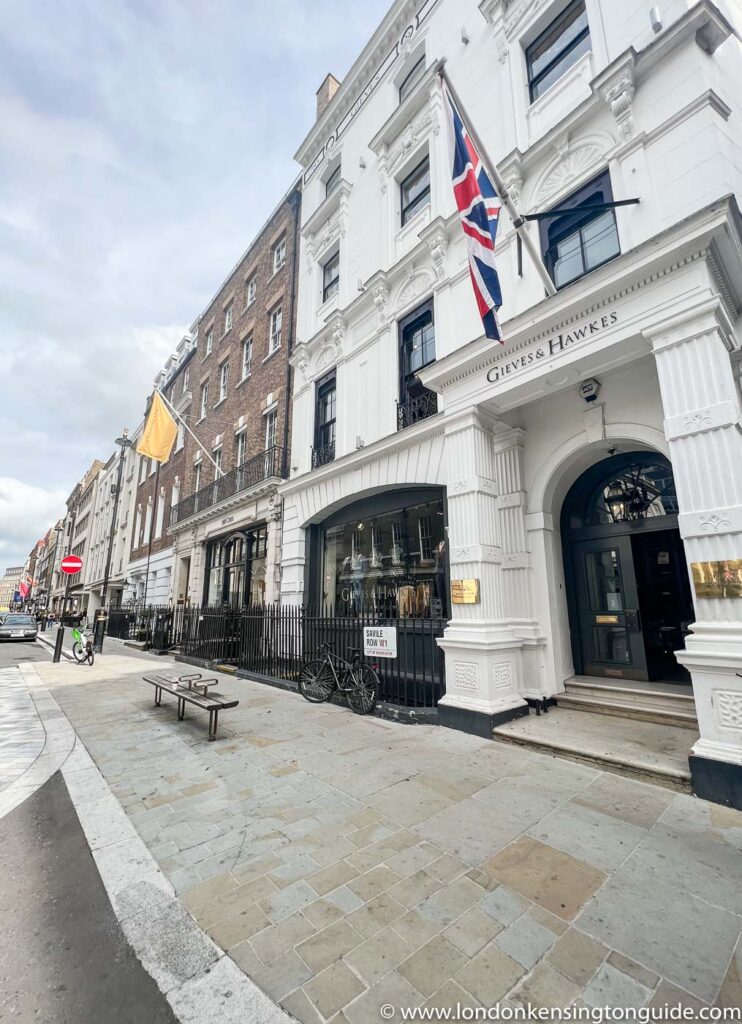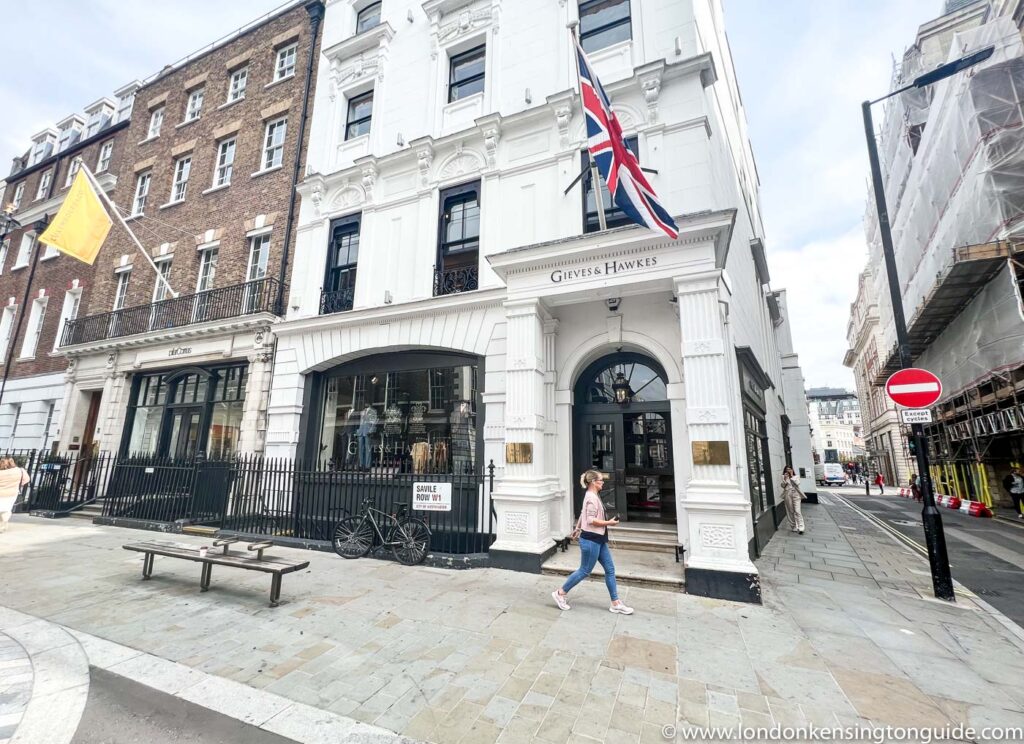Last Updated on 30 January, 2023
Savile Row has gained a reputation for traditional bespoke tailoring for men and is located between Vigo Street and Conduit Street in the heart of Mayfair. Many of the items are not available on online for those not able to get to Savile Row.
The initial name of Savile Row was Savile Street. While the Burlington estate was being developed, this street was built from 1731 to 1735. Its design was per Palladian architecture, referred to as ‘Burlingtonian.’ The prime architect was Henry Flitcroft, who supervised Daniel Garrett.
However, William Kent designed 1 and 22-23 Savile Row. In the early days, military officers and their wives had residences on this street. Later, the residents were Richard Brinsley Sheridan (an Irish-born playwright and MP) and William Pitt the Younger.
William has written letters from this location while it was named Savile Street. Richard had his address at 14 Savile Row from 1813 to 1816. When Jules Verne wrote ‘Around the World in Eighty Days,’ his main character, Phileas Fogg, had his residence at 7 Savile Row.

A Little History About Savile Row
During the late 18th century, tailors commenced businesses in this region. In 1790, they were in Cork Street, and since 1803, in Savile Row. In 1846, Henry Poole, who had his tailoring premises in Old Burlington Street, opened an entrance at 37 Savile Row from his premises to Savile Row.
Due to the advent of tailors on this street, the front part of the houses was modified to have more light wells and glass frontages so that more natural light entered the working area of tailors. Due to the alterations made to the houses over time, the initial Burlingtonian design has become a thing of the past.
From 1870 to 1912, No. 1 Savile Row was occupied by the Royal Geographical Society. It was from this location that British expeditions to Africa, Asia, and the South Pole were scheduled.
Since then, this address has been linked with travel and adventure. After this society began operations from Savile Row, the Savile Club moved into 12 Savile Row. When World War I ended in 1919, the No. 11 Savile Row was occupied by H. Huntsman & Sons.
In 1937-38, Savile Row had an extension to Conduit Street. In 1939, on the corner of Boyle Street, construction of the Metropolitan Police Station was completed. In 1949-50, the address 23 Savile Row became the Fortress House. This was an eight-story building that housed a series of government ministries. In 2009, this structure was destroyed, and a mixed-use development started at this address.
In 1969, the Savile Row tailoring style and approach were modernized by Nutters of Savile Row. This trend of modernization continued till the 1990s when the ‘New Bespoke Movement’ began.
Three designers, Timothy Everest, Ozwald Boateng, and Richard James, were active participants in this movement. It is widely believed that the term ‘bespoke,’ when applied to fine tailoring, originated in Savile Row. The term implied that the suit was cut and made using the hands.


Things To Do Near Savile Row
Savile Row is located just a couple of streets from Regents Street meaning that you have plenty of opportunity for more retail therapy spilling from Savile Row and into Regent Street and into Carnaby Street or Oxford Street. All of which are a short walk. In addition, you are close to Theatreland with plenty of options to catch some of London’s famous theatre shows. Some of which have been running for decades.
You also have access to amazing places to eat in Mayfair, from cute bars and restaurants to cafes. There is everything you can possibly think of all within a short walk from Savile Row. Below are just a few places not to miss on a long list of must-see places in Mayfair.
- Royal Academy of Arts: This institution was established in 1768 and is independently governed and privately funded. Reputed architects and artists lead it to foster the creation, appreciation, and joy of visual arts utilizing debate, education, and exhibitions.
- Halcyon Gallery: This is a leading international art gallery established in 1982. It specializes in modern and contemporary art.
- Kingly Court Food Court: This iconic three-story alfresco dining location hosts 21 international concept cafes, bars, and restaurants within an awesome courtyard covered in winter and opens in summer.
- Fortnum & Mason: This is an upmarket department store established in 1707 as a grocery store. Although it has many restaurants, a tea shop, and a gentlemen’s department, it also stocks basic, specialty, and exotic products. You simply cannot visit without trying their famous afternoon tea.
- Burlington Arcade: Stop by one of London’s oldest shopping arcades, there are cute little boutiques from amazing designer shoes, jewellery to clothing and cafes like Laudree.

Getting To Savile Row
Getting to Savile Row couldn’t be easier, the nearest underground station is Piccadilly Circus, although you have other underground stations within walking distance. These include Oxford Circus, Bond Street and Green Park. In addition, there are plenty of bus routes providing easy access to reach Savile Row.
Below is a map for additional help in locating Savile Row from your starting location.




